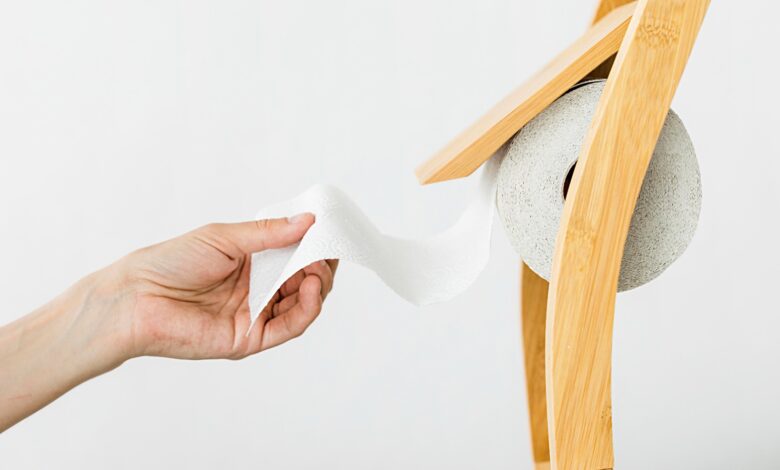What Parents Should Know About Dental Sealants for Kids

How Dental Sealants Are Applied
One of the best things about dental sealants is that the procedure is quick, painless, and non-invasive. Here’s a step-by-step guide on how pediatric dentists apply sealants:
1. Cleaning the Tooth Surface
Before applying the sealant, the pediatric dentist will thoroughly clean the tooth’s surface. This ensures that no food particles, plaque, or bacteria are trapped under the sealant, which could potentially cause cavities. Using a small rotating brush and special toothpaste, the dentist removes all debris from the tooth.
2. Preparing the Tooth with an Acidic Solution
After the tooth is clean, the dentist will apply a mild acidic solution to the tooth’s surface. This process, called etching, roughens the surface slightly, creating a better bonding environment for the sealant. The etching process only takes a few seconds, and it helps the sealant adhere to the tooth more securely.
3. Rinsing and Drying the Tooth
Once the etching is complete, the dentist will rinse off the acidic solution and dry the tooth with air or a small vacuum. It’s crucial that the tooth is completely dry before the sealant is applied to ensure it sticks properly.
4. Applying the Sealant
The dentist will then carefully apply the sealant material to the tooth’s grooves and fissures using a small brush or applicator. The sealant is typically a liquid resin that quickly flows into the deep crevices of the tooth. This liquid forms a protective shield over the tooth’s surface.
FOR INFORMATIVE CONTENT VISIT.. : Hot Air Balloon Rides
5. Hardening the Sealant with a Curing Light
Once the sealant is in place, the pediatric dentist will use a special blue curing light to harden the sealant. This step only takes a few seconds per tooth and is entirely painless. The light helps the sealant material harden and bond firmly to the tooth.
6. Checking the Sealant
After the sealant is hardened, the dentist will check to ensure it’s evenly applied and smooth. If necessary, the dentist may adjust the sealant slightly to ensure the child’s bite is comfortable.
Time It Takes for the Procedure
The entire process usually takes just a few minutes per tooth. For a full set of molars, the procedure can be completed in one dental visit, making it a simple and efficient way to protect your child’s teeth from cavities for years to come.
When Are Dental Sealants Recommended?
Typical Age Range for Dental Sealants
Pediatric dentists typically recommend dental sealants for children between the ages of 6 and 14. This is when the first and second permanent molars start to come in. These back teeth are particularly prone to developing cavities because their deep grooves and fissures can trap food particles and bacteria, making them harder to clean with regular brushing.
- First molars: These usually come in around the age of 6.
- Second molars: These typically appear around the age of 12.
It’s important to apply dental sealants as soon as these molars fully erupt to provide early protection against decay. Once the teeth have come in, it’s an ideal time for the sealant application since the chewing surfaces of the molars are most at risk during this stage of a child’s dental development.
Importance of Early Application
Permanent molars have deep grooves and pits on their surfaces, which are prime spots for cavities to form. Even with regular brushing, it can be challenging for children to clean these areas thoroughly, especially when they are still learning proper oral hygiene habits. Sealants act as a barrier, sealing off these grooves and preventing bacteria and food particles from getting trapped.
By applying sealants as soon as these permanent teeth emerge, parents can help protect their child’s teeth from decay during their formative years when they are most cavity-prone. This preventive measure can save both time and money by reducing the need for future dental treatments like fillings.
Sealants for Baby Teeth
While dental sealants are most commonly recommended for permanent molars, pediatric dentists may also advise applying sealants to baby teeth in certain situations. If a child’s baby teeth have unusually deep grooves or if they are at a high risk of decay, sealants can provide an extra layer of protection.
Baby teeth play a vital role in maintaining proper spacing for permanent teeth, so keeping them healthy is essential for long-term dental health. In cases where baby teeth are at risk, sealants can help ensure that they stay intact until they naturally fall out and are replaced by permanent teeth.
Are Dental Sealants Safe?
A Long History of Safe Use in Pediatric Dentistry
Dental sealants have been safely used in pediatric dentistry for decades. They are a common preventive treatment applied to protect children’s teeth, particularly their molars, from cavities and decay. Over the years, studies have consistently shown that sealants are not only effective in reducing the risk of cavities but are also safe for children of all ages. Pediatric dentists frequently recommend sealants because they provide a non-invasive way to protect teeth without the need for drilling or removing any part of the tooth.
Addressing Concerns About BPA in Sealants
One concern that some parents may have heard about is the presence of BPA (bisphenol A) in dental sealants. BPA is a chemical sometimes found in plastics, and its use in various products has raised questions about its safety. However, it’s important to know that the levels of BPA in dental sealants are extremely low—so low, in fact, that they pose no health risks.
Research has shown that the amount of BPA a child is exposed to from dental sealants is far less than what they might be exposed to from other daily sources, such as certain foods or even regular contact with dust. The American Dental Association (ADA) and the American Academy of Pediatric Dentistry (AAPD) both affirm that dental sealants are safe and that any potential BPA exposure is minimal and not a cause for concern.
High-Quality, Safe Materials Used by Pediatric Dentists
Pediatric dentists are committed to using high-quality materials that meet stringent safety standards. The materials used for dental sealants are not only safe but are also approved by leading dental health organizations, such as the ADA and the U.S. Food and Drug Administration (FDA). These materials are designed to last for several years, providing durable protection against cavities, and can be reapplied as needed.
Sealants used in pediatric dentistry today are free from harmful chemicals, and the application process itself is non-invasive and pain-free. This makes dental sealants a reliable, effective, and safe option for protecting children’s teeth.
How Long Do Dental Sealants Last?
Longevity of Dental Sealants
Dental sealants typically last up to 10 years with proper care. However, the lifespan of a sealant can vary based on several factors, including the child’s eating habits, oral hygiene practices, and natural wear and tear. While sealants are designed to be durable, they are not permanent and may need to be replaced over time to continue providing maximum protection.
Regular Checks by Pediatric Dentists
During routine dental visits, pediatric dentists will check the condition of the sealants to ensure they are still intact and functioning properly. Sealants may wear down, chip, or even fall off over time due to normal use or biting into hard foods. The good news is that reapplying dental sealants is a simple and quick process. If the dentist notices that the sealants have worn away or are damaged, they can easily reapply them to restore full protection.
Sealants are highly effective in preventing cavities, but their success relies on regular dental checkups. These visits ensure that the sealants are doing their job and allow the pediatric dentist to make any necessary adjustments to keep your child’s teeth protected.
Importance of Regular Dental Checkups
Maintaining regular dental checkups is essential for ensuring that the dental sealants remain intact. Routine visits allow the pediatric dentist to not only inspect the sealants but also check for any signs of decay or other dental issues that may arise. Even with sealants, it’s important for children to brush and floss daily, as well as avoid habits that could damage the sealants, such as chewing on ice or hard candy.
Caring for Teeth with Dental Sealants
Tips for Maintaining Good Oral Hygiene with Sealants
Even with dental sealants, children need to maintain a regular oral hygiene routine that includes:
- Brushing Twice a Day: Your child should brush their teeth with fluoride toothpaste at least twice a day, especially after meals. Using a soft-bristled toothbrush, they should focus on cleaning all surfaces of their teeth, including the molars that have been sealed. Sealants protect the grooves of the teeth, but the rest of the tooth still needs to be cleaned thoroughly.
- Flossing Daily: Flossing is essential to remove food particles and plaque from between teeth where sealants can’t reach. Encourage your child to floss every day, even if they have sealants, to prevent gum disease and cavities between the teeth.
- Regular Dental Visits: Routine dental checkups are critical for monitoring both the health of your child’s teeth and the condition of the sealants. Pediatric dentists will ensure the sealants are intact and performing their protective role. If needed, they can reapply sealants to areas that have worn down.
Dental Sealants as an Additional Protective Layer
It’s important to remember that dental sealants do not replace good oral hygiene; they work alongside it. Sealants provide an extra layer of protection by sealing off the deep grooves in the back teeth where cavities commonly form, but they don’t prevent cavities in other areas. Regular brushing and flossing are still essential for preventing plaque buildup and tooth decay on other surfaces.
Sealants are most effective when combined with proper dental care. The best way to keep your child’s teeth healthy is by maintaining a consistent oral hygiene routine and visiting the pediatric dentist regularly.
Avoiding Sticky or Hard Foods
Certain foods can potentially damage or wear down dental sealants over time. To keep the sealants in good condition, it’s important to limit your child’s intake of sticky or hard foods, such as:
- Sticky Foods: Chewing gum, sticky candies like caramels or taffy, and gummy snacks can cling to the sealants and weaken their bond to the tooth.
- Hard Foods: Biting into hard foods like ice, popcorn kernels, or hard candies can cause the sealants to chip or crack.
By helping your child avoid these foods, you can ensure their sealants stay intact for as long as possible, providing the protection their teeth need.





